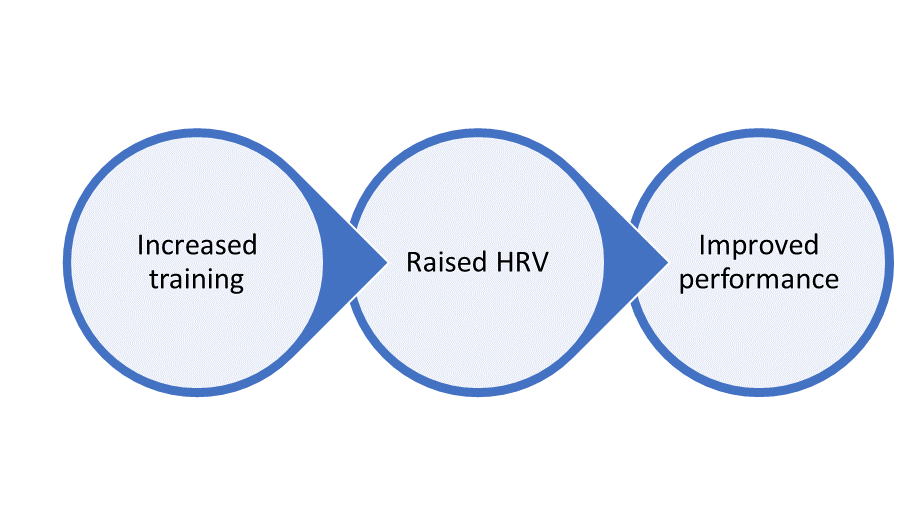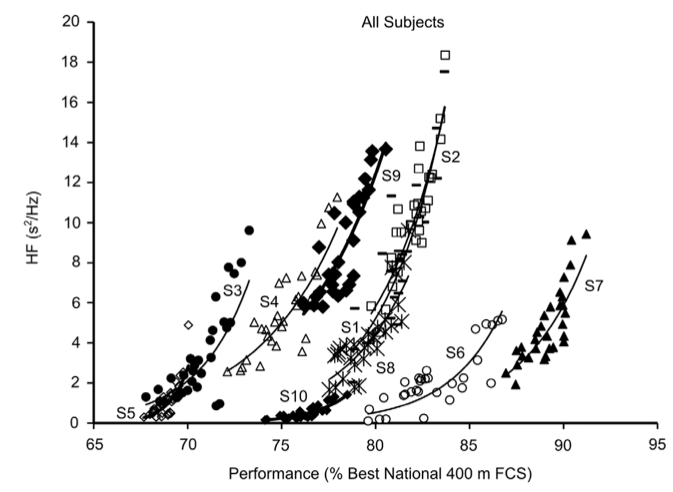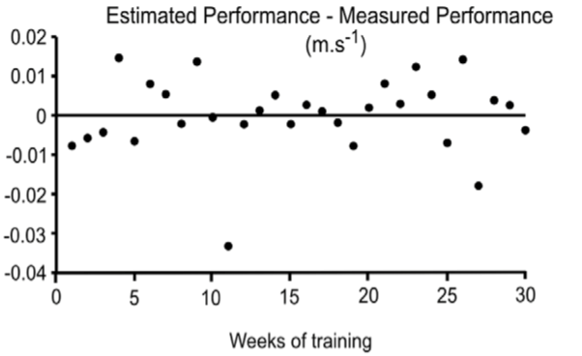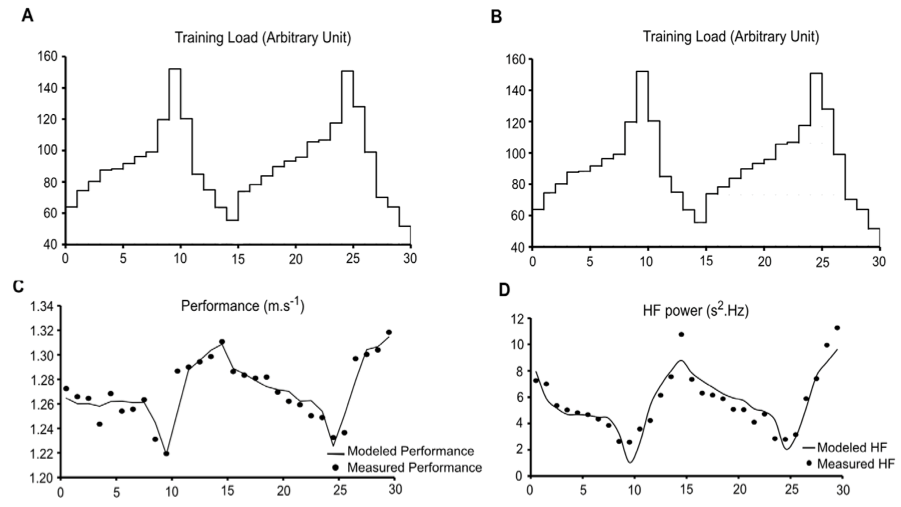Research performed over several decades has shown that when performed regularly aerobic exercise increases heart rate variability (HRV). Studies, such as this one, demonstrated that changes in HRV have corresponded with changes in performance brought about by training in middle distance (10k) runners.

We know that more training leads to improved performance, but how do you get that just right? The crucial correlation with HRV allows athletes to visualise the rise in fitness and perfect training.
Who, why and what?
A fascinating study performed by experienced French & Australian researchers takes this a step further to look in detail at the relationship between training load, performance and HRV.
Importantly, they wanted to test a model that would allow elite swimmers’ maximum performance to be predicted from training loads recorded over a long period of time and from regular HRV measures (indicating both recovery and aerobic development).
They did this by collecting data from 10 national & regional standard swimmers (4 female, 6 male) every week over a period of more than a year This data included HRV measurements taken immediately before performing a weekly 400m time trial assessment.

What did they find?
They found highly significant relationships between vagal high frequency HRV and performance in all 10 swimmers.
The chart below shows individual HRV readings plotted against individual performance measures taken from the weekly time trial assessment. R2 values ranged from 0.55 to 0.80 (p<0.001) meaning that between 55 and 80% of the swimmers’ changes in performance could be predicted by their HRV:


In an example case of a female swimmer, the achieved weekly performance was within +/- 1% of that predicted by her HRV:

The effectiveness of the model can be seen in the chart below, where the training load chart over a 30 week period is repeated in Figs A, B to allow comparison between the achieved performance, and modelled performance (Fig C), and measured HRV and predicted HRV (Fig D):

What does it mean?
There are several important conclusions we can take from this study:
- HRV can be a remarkably insightful tool, reflecting changes in performance, recovery and overall health. However, the relationships between HRV and performance are specific to the individual athlete, and require taking care with measurements of both performance and HRV to build a good model.
- Due to the variation in individual levels of HRV, it’s not the athlete with the highest starting HRV that wins, it’s the athlete that manages to increase their HRV the most that gets the biggest gains in performance.
- There was no significant difference in the effectiveness of the model between genders in the model, implying that HRV based training is equally applicable for men and women.
- Taper periods need to be quite long (2-3 weeks) for adaptations to really take hold. For an individual using ithlete, this could mean continuing the taper until no further rises in HRV are seen before starting to ramp up the next training block. Conversely, if HRV is not decreasing during an intensive training block – you’re not working hard enough.
A caveat would be that this was a study on a small number of elite swimmers by expert researchers, and is therefore likely to show best case results. But anyone with an ithlete app, sensor and a way to measure their performance regularly can repeat this study for themselves. We’d be interested to hear from anyone that has done this and what they have found.
To read the original research paper
